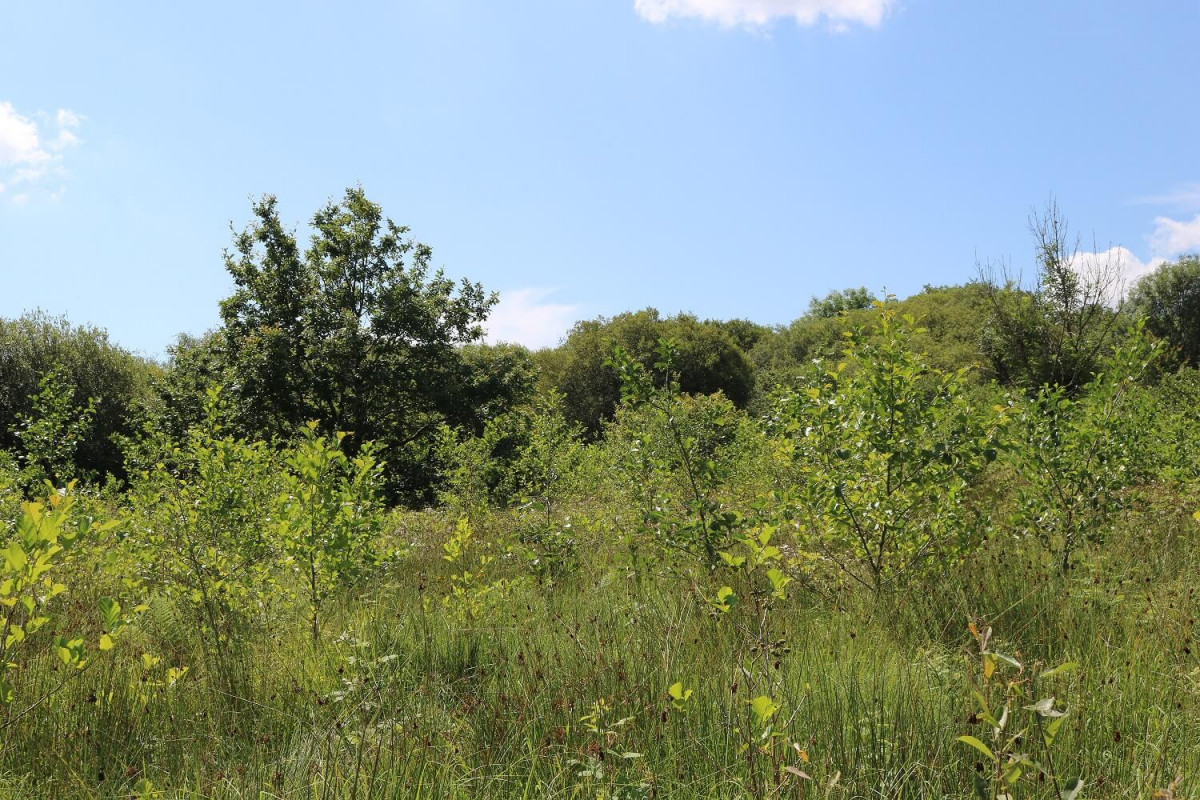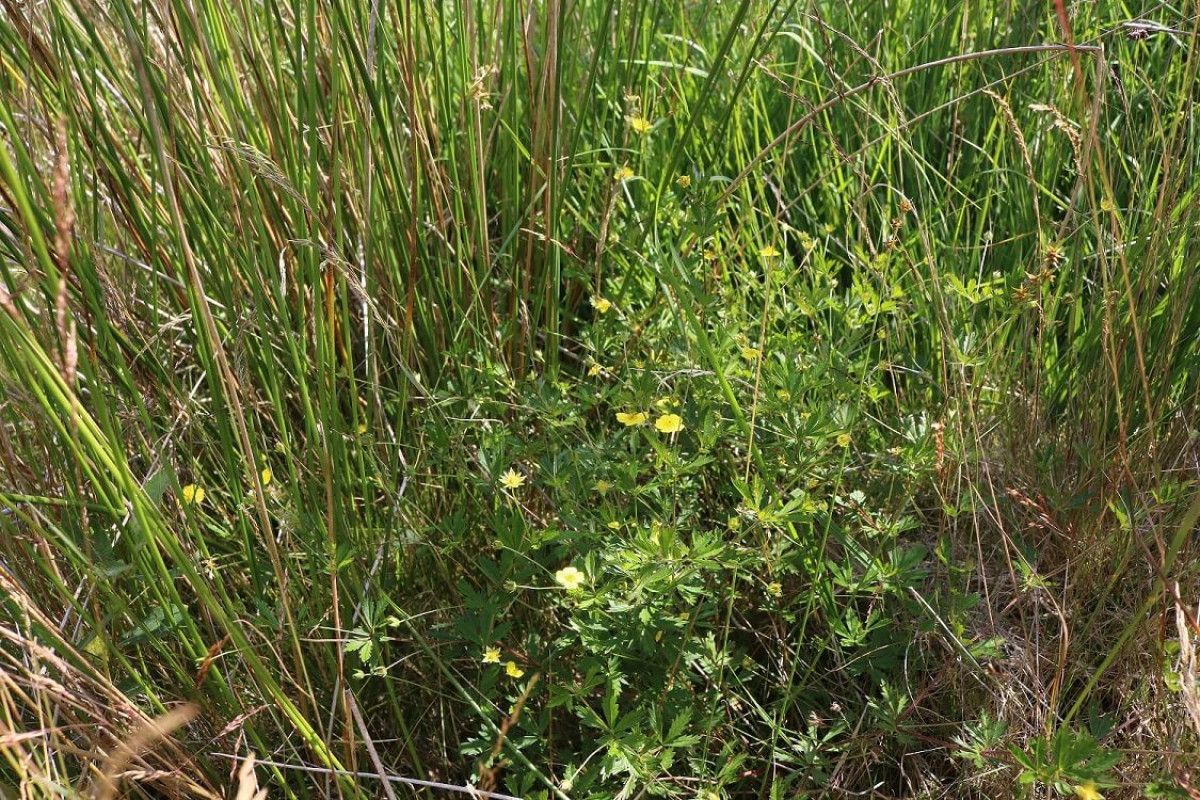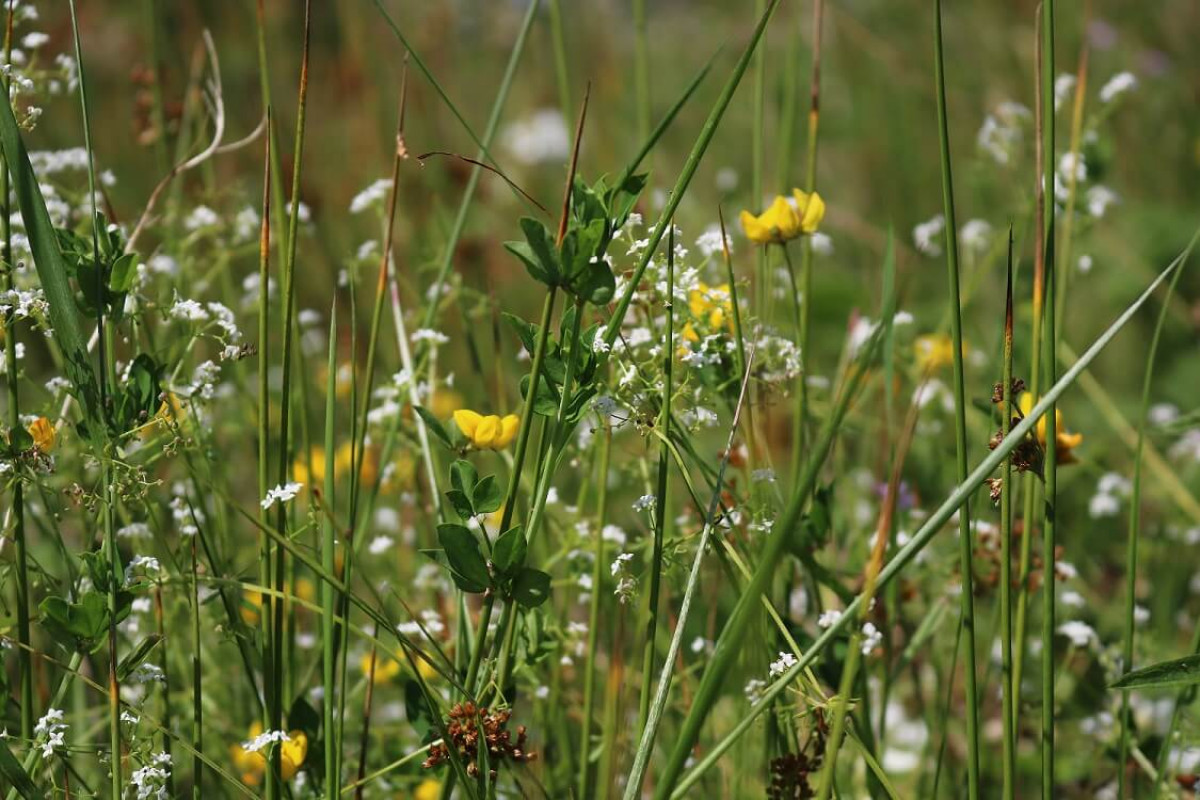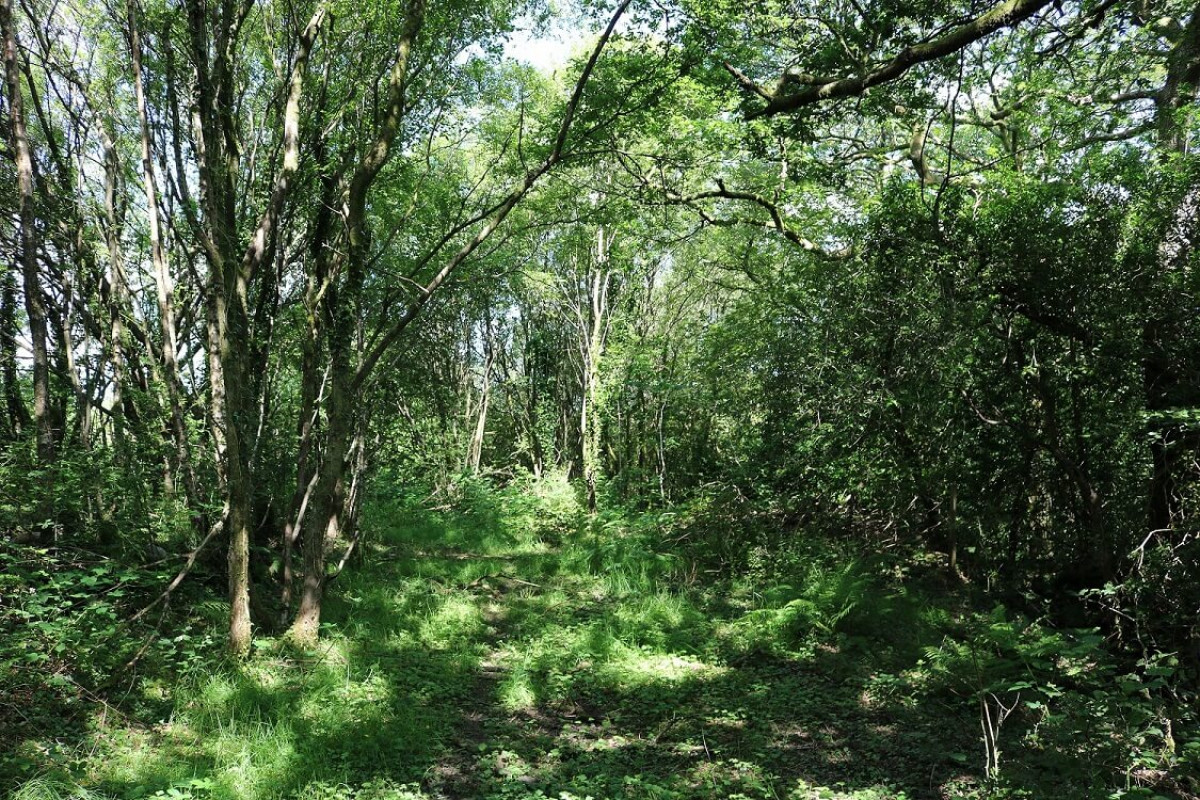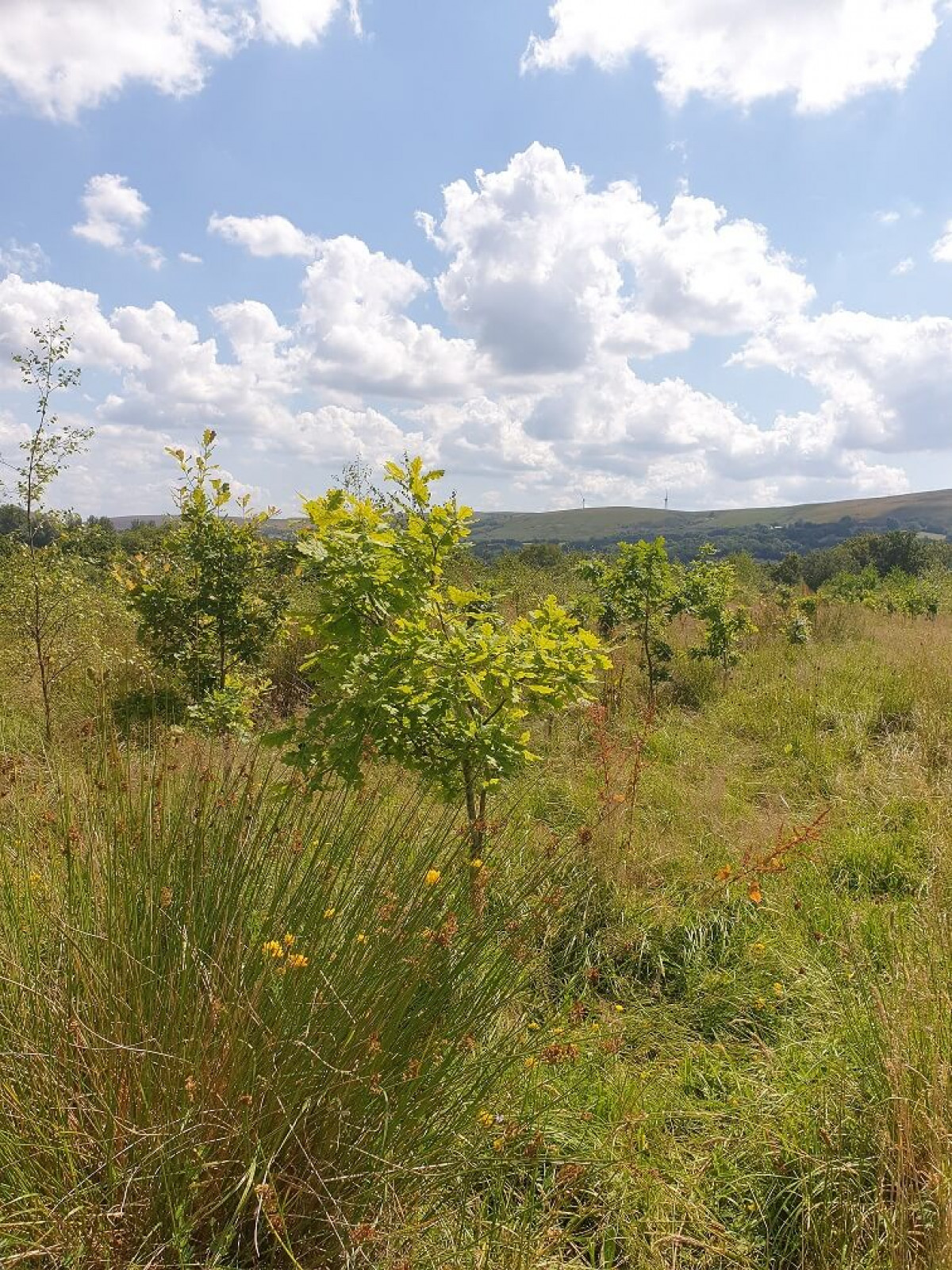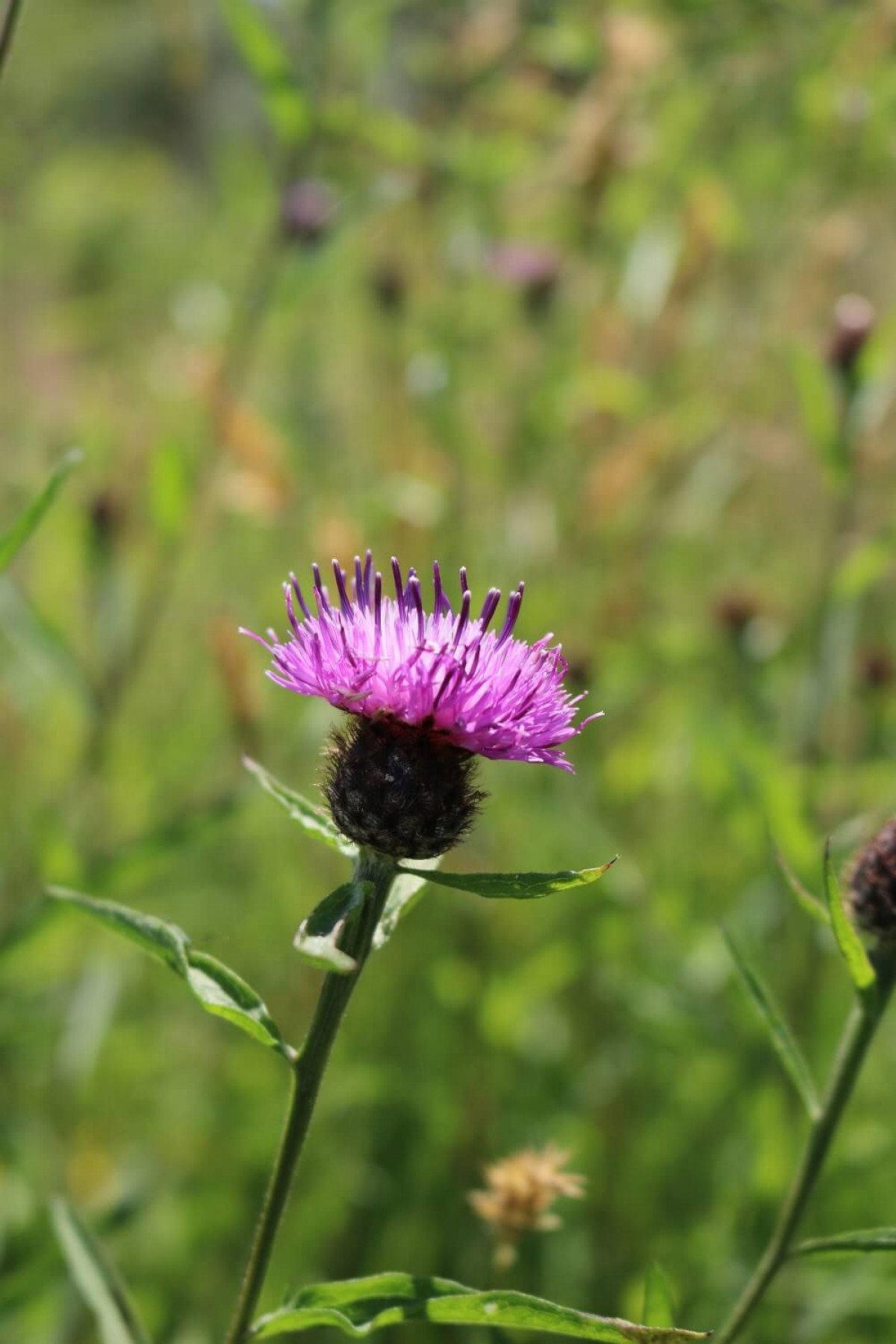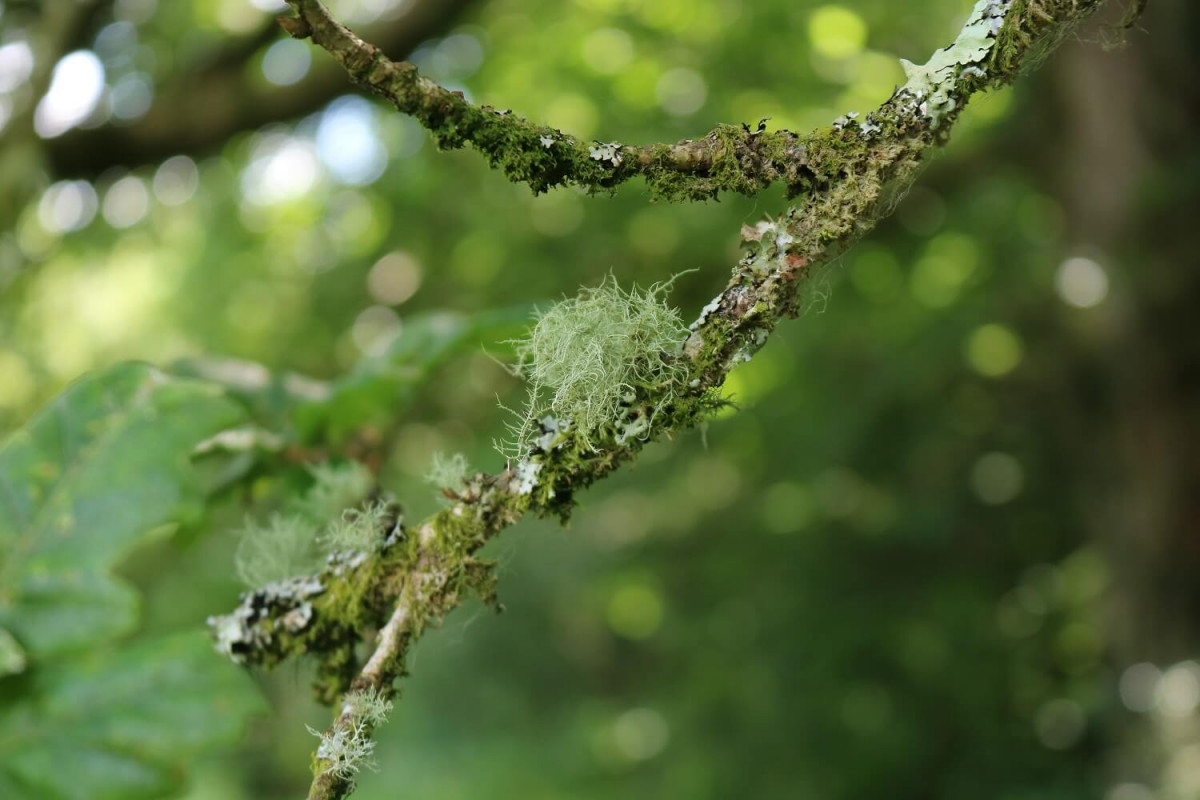23 July 2021
A Short Nature Walk Through Steenbergs Woodland In Garnant, South Wales
A short nature walk with our newly planted woodland in Garnant, South Wales, that describes the habitats we walked through.
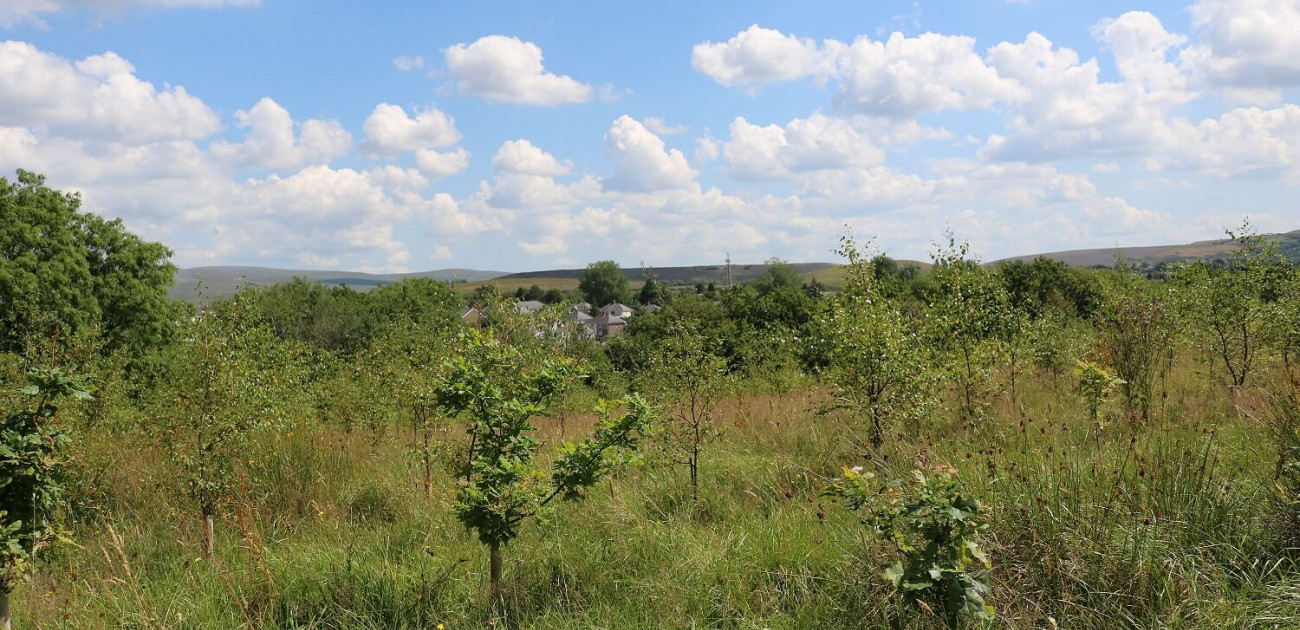
Sophie and I, and our teenager children, walked on a really hot July afternoon through our young woodland. The walk took us from Bryncethin Road towards the footpath down to Gwaun-Cae-Gurwen, a walk I had recently done with Rob Parry from The Initiative for Nature Conservation Cymru.
After hopping over the hedgebank, we were transported from the black tarmac road into a humid, green chaos of plant growth. The first field was full of tall, slender alder trees that were 2 – 3 metres high, impressive considering they are only 5 years old. Dotted through these are self-sown willow trees, mainly pussy willow – much bushier than the alder but a similar size; there are both goat and grey willow throughout the wood.
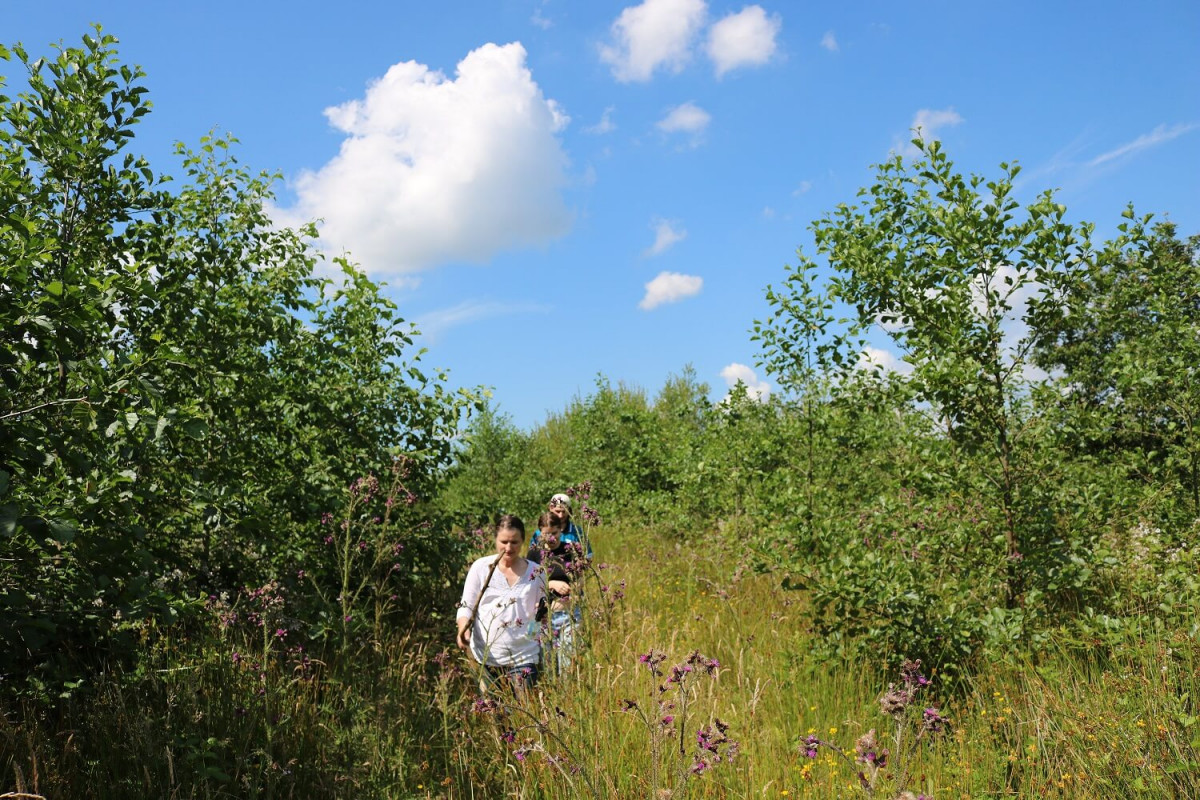
Through the trees you get glimpses of the wet, marshy grasses and reeds typical of rhôs pasture. It’s not all green as there are purples from thistles and willow herb, yellows from bird’s foot trefoil and whites from the brambles.
As we walked past the derelict barn, turning south, we passed through a gap in the old hedgerows where a really old willow clings to the hedgebank. In the winter, a stream runs alongside the hedgerow edge. I love these features of the landscape that tell a story of farmers who have defined the edges of their land with hedgebanks for 100s of years. Their trees stand as a record that stretches back through time, creating a rich patina of cultural history overlaying the fields.
Here the rhôs pasture is easier to see as the trees have not grown as rampant. Rhôs pasture is a wet wildflower rich pasture on acidic soil that is made up of tussocky purple moor grass (Molinia) and rush. Through these, alder trees have been planted and about 100 metres away there are willows, where a small willow carr has formed at the point that two streams converge.
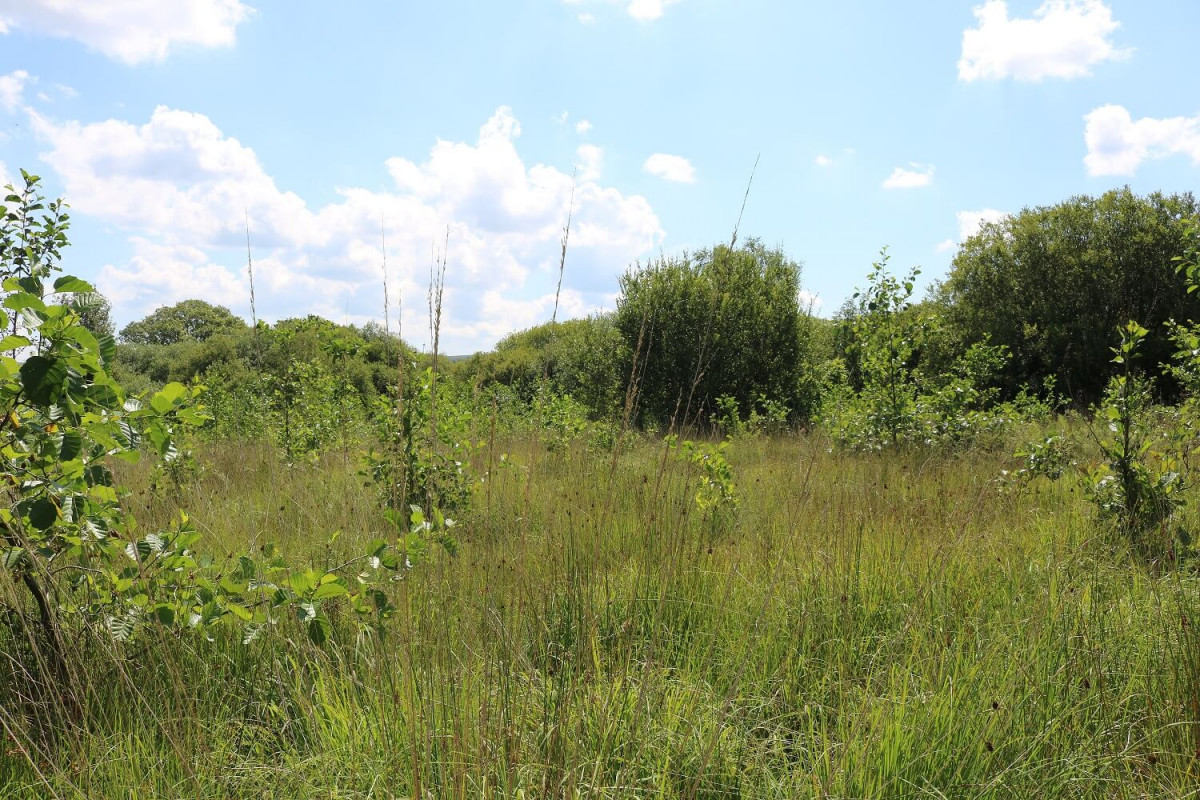
In amongst the grass tussocks and rushes, there are greater bird’s foot trefoil and white, honey-smelling marsh bedstraw, and spongy underfoot was, I think, sphagnum moss with tormentil growing through it. Meadow brown butterflies are flitting about, not as many as further on in the walk, but definitely here.
Above us, a buzzard circled and warned us of its presence with regular, high-pitched screeches, and then surreally the loud sounds – grunts from the bikes and noisy commentary – from a motorbike championship at the Amman Valley Trotting Club’s stadium.
Next, we clambered through some willow herb, purple foxgloves, nettles, brambles and stick-a-back at the corner of three fields. A grey squirrel scurried away through overhanging willow branches. Then, we walked through some more rhôs pasture interspersed with young alder trees, self-sown willows and past the willow carr. The tussocks of purple-moor grass were much bulkier here and every so often you would collapse in an unglamorous heap as your feet gave way into a hollow. Here, there were greater bird’s foot trefoil, some devil’s bit scabious, brambles and a few common ferns. Lots of painful and aggravating clegs here, but also a gorgeous dragonfly.
We went through a dark, dappled hedgerow that had been left to grow out. Old, pollarded willows had grown like topsy, revealing their age from the moss clinging to their rough bark. Here, it was cooler, dank and much more silent, with all outside sounds cut out by the shrubby trees everywhere. These had grown over and enclosed the dried-up streams. There are loads of streams and drains crisscrossing the wood – very wet in the colder, winter months but dry today.
Now the woodland starts to transition from damp, acidic marshland to neutral, hay meadows. The next field is part rhôs and part hay meadow.
Oaks and a hazel stand guard the entrance as we walk into the next two hay meadows, so we’ve moved to delicate, crested dogstail and sweet vernal grass in the main rather than the tussocky Molinia, with cocksfoot and false oatgrass in the shadier areas by the trees in the hedges. These have been planted with downy birch as the main pioneer species, with alder in the damper parts, and sessile oak as the climax species. None of the trees are anyway near as tall as the alder trees we passed earlier, despite being planted at a similar time, partly as the soil is much shallower and less rich, and, also, because birch and oak are slower growers – the oak especially so. Throughout, we’ve gone with sessile oak as the soil is acidic whereas common oak prefers a neutral soil.
Here, you find yellow rattle flowers that parasitize the grass and have kept the grasses manageable, knapweed, buttercups, eyebright and valerian and at the field margins big patches of ferns that reptiles, and perhaps snakes, will love. There were meadow brown butterflies, commas, small and large whites; six-spot burnets on the knapweed; and a green grasshopper – everywhere there was the hum of insects and the chirrupy violin-playing sounds of the grasshoppers.
We come out onto the public footpath, enclosed by overarching trees, much like the start of Lord of the Rings – here you can imagine Frodo, Sam, Merry and Pippin hiding from the Nazgûl by the roadside. Then, we come out into a glorious open space of traditional hay meadow, in the middle of which is a group of eight magnificent old oaks, with their ancient branches arcing down to the ground to take the load. Here, willow tits were heard in the springtime but not now – it was really too hot for everything except the insects. A massive patch of valerian covers a section of the field, but the orchids are over now, with willows in the background where Bryncethin Bach runs across the wood.

Through a dark, really old feeling pathway, we walk under oaks, gnarled and pitted, covered in moss and lichens – not your clean, naked tree branches here, but frondy, craggy old trees. Then we’re out again into more meadowland. This time, it’s been planted with a mix of downy birch, sessile oak, alder and rowan, and surrounding the field there are lots of big old oak trees, majestic and stately.
And at the end, shrubs segue into a dark, dank, old woodland patch, with alder, rowan and willow. The floor here is a soft brown from the decaying plant litter that has that rich, fertile earthy smell. Ivy, ferns and an eery silence.
We’ve reached the end. There’s so much more to explore and talk about, but this short walk gives a flavour of the mosaic of habitats and management styles on the site. And to be sure, it’s not just young trees, but trees ranging from one year old through to 200 years old, from planted to self-sown.
Beautiful and enlivening. But also a daunting sense of guardianship.
